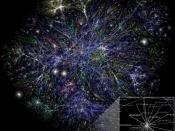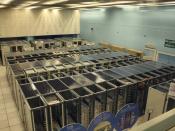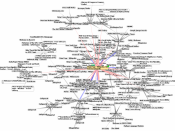Effects of the new technology also follow social class lines. The higher one goes up the social ladder, the more this technology is benefit. The new technology assists the upper middle class, for their education prepares them to take a leading role in managing the global system for using the new technology to progress in their chosen occupations. This new technology opens and closes opportunities for people largely by virtue of where they are located on the social class ladder. For people 500 years ago, the new technology was the printing press. For people today, the new technology consists of computers and various forms of the electronic media. In Bill Gates' 1995 book, The Road Ahead, he, a Microsoft cofounder and Chairman, states:
Technological progress will force all of society to confront tough new problems, only some of which we can foresee.... Societies are going to be asked to make hard choices in such area as universal availability, investment in education, regulation, and balance between individual privacy and community security (Gates 1995, 252).
Digital divide refers to the technology gap between the poor and the middle and upper classes. The so-called "haves" and "have-nots" also have a race-ethnic constituent. Because a larger proportion of minorities are poor, compared with whites, a smaller percentage of African-Americans, Latinos, and Native-Americans have access to computers and the Internet. If the people who live in poverty have less access to computers and the Internet, their disadvantage in the new technology will grow. If computers were only for playing cyber games, this would not be an issue. But the Internet has become a major source of information.
Almost every grade school in the United States introduces its student to the computer. Children learn how to type on it, as well as how to use mathematics...



Pretty decent, Jasonid!
Well written. Backup with lots of stats.
Well done. I'd give it a 9/10.
0 out of 2 people found this comment useful.